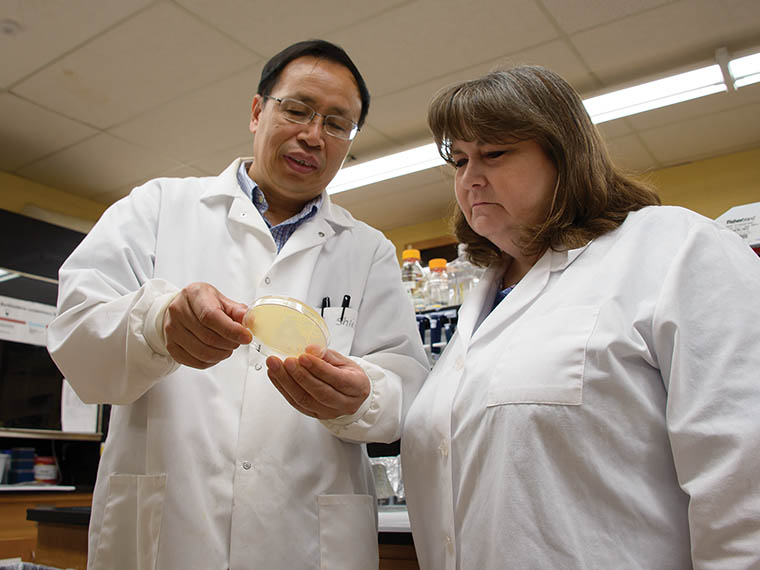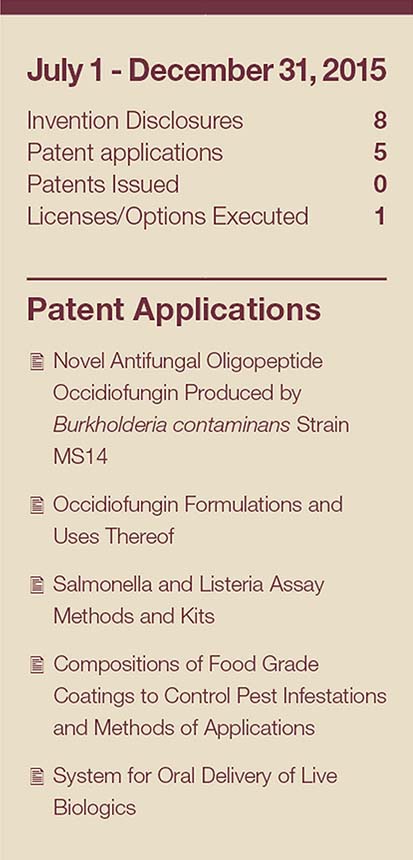The information presented on this page may be dated. It may refer to situations which have changed or people who are no longer affiliated with the university. It is archived as part of Mississippi State University's history.
It began as a curious inquisition that resulted in a discovery that may lead to the development of a new antifungal drug.
Dr. Shien Lu, a MAFES scientist in the Department of Biochemistry, Molecular Biology, Entomology, and Plant Pathology, was walking through the lawn and found a patch of brown grass. In the middle of the brown radius was a patch of green grass. Lu's curiosity was piqued.
What caused the grass in the middle to remain green? What was fighting the fungus which had killed the grass encircling the healthy clump?
He took the disease-suppressive soil back to his lab which led to the identification of the antifungal compound occidiofungin.
"I isolated the bacterial strain MS14 from the root surface of diseased lawn grasses infected by the fungal pathogen Rhizoctonia solani," Lu said. "We found that the bacterium produces the compound occidiofungin, which shows significant fungicidal activities to various plant and animal fungal pathogens."
This new compound appears to kill fungus rather than simply suppressing it, as do many of the products currently on the market.
"Occidiofungin has great potential as a novel pharmaceutical drug or as a fungicide for agriculture," Lu said.
The potential drug shows significant promise for the treatment of serious fungal infections in people with compromised immune systems, such as those undergoing chemotherapy treatments and those with HIV or AIDS.
"The current studies suggest occidiofungin may disrupt cell wall formation and inhibit some enzyme functions in the target fungi," Lu said. "Occidiofungin may have a novel mode of action compared to current antifungal drugs."
Two patents have been filed on the discovery. Lu and MSU College of Veterinary Medicine researchers Dr. Frank Austin and Dr. Stephen Pruett are working with colleagues from Texas A&M on clinical trials. Field trials of the compound for plant disease control are also under way.


